- Home
- Joseph Conrad
Heart of Darkness and the Congo Diary Page 3
Heart of Darkness and the Congo Diary Read online
Page 3
But even an immunity to noxious smells cannot defend Marlow from being challenged on several fronts. He is quickly made aware, when he becomes ‘one of the Workers, with a capital’ (14), that a wider political machinery can itself be found to exploit the superficial rhetoric of the Carlylean work ethic to legitimize its ultimately criminal purpose. (In 1898, Leopold had required of his agents that they ‘accustom the population to general laws, of which the most needful and the most salutary is assuredly that of work’.)9 Once in Africa, he quickly learns that his work efforts are either rendered futile by a lawless inefficiency or part of a process ultimately devoted to base ends.
Even though Marlow tries to attend to practicalities involved with the job in hand–the problem of acquiring rivets, tracking river obstacles and efficient steering–he is increasingly forced to question how far the job-sense is a necessary avoidance of a painful knowledge of the self and world. At a crucial point in the narrative, two documents serve to bring home his crisis of choice: on the one hand, the clear seamanly purpose he finds in Towson’s nautical manual, a symbolic reminder of his inherited traditions, or, on the other, the searing self-contradictions of Kurtz’s pamphlet, a signpost to the possibility of different kinships and allegiances.
In more senses than one, Marlow loses navigational clarity and purpose. The pressures put upon him reflect more widely on a tradition of liberal humanism that, when faced by the flinty actualities of wider colonial politics, has commonly suffered painful defeat and been left with a legacy of nervous irritation, panic, hysteria and frustrated silence. At the point where Marlow’s panic sets in, Kurtz becomes a more material presence; as the narrator begins to share empathically in Kurtz’s ordeal, their crises intermesh.
From a point of hindsight, Conrad himself seems to have been aware of the dangerous risk involved in the treatment of the tale’s presiding symbolic figure: ‘What I distinctly admit is the fault of having made Kurtz too symbolic or rather symbolic at all’ (Collected Letters, vol. II, p. 460). Even in the first part of the tale, the Kurtz who emerges through hearsay and gossip is a bewildering medley of possibilities–now universal genius, now noted ivory-hunter, now confirmed solitary with ambitious plans for Africa and now threatening spectre. The problem of Kurtz’s shifting metamorphoses becomes more formidable as the tale progresses, since this figure will become part of the tumultuous content of Marlow’s nightmare, shaping its form and providing its climax. With each of his metamorphoses, moreover, Kurtz also contributes to a shifting sense of the nature and location of the ‘heart of darkness’. How various and plural are his main incarnations, and how are their meanings registered in Marlow’s narrative?
One of Kurtz’s symbolic identities memorably extends the ‘dark’ evidence of European rule in Part I. Several descriptions focus upon his extreme deformity and grotesque, puppet-like movements in order to bring home the sense in which, as Europe’s offspring, he enacts the logic of its expansionist and acquisitive drives. In his restless energy as an explorer, conqueror and self-styled hero of Empire, he is a powerfully iconoclastic caricature. To the extent that he casts aside the need for any hypocritical pretence and unashamedly acts out the will to acquire vast amounts of ivory, he embodies a brute economic imperative as well as an unnatural idolatry of the material object.
Where some nations tended high-mindedly to regard overseas expansion as an organic extension of their destiny, Heart of Darkness can suggest a powerfully alternative vision: of imperialism as a historical deformation, whose working out involves an inevitable principle of degeneration. Central to this version is the presentation of Kurtz as a malformed seven-foot-long puppet-creature, who enacts a grotesquely choreographed ceremony. Kurtz has become so enthralled to the commodity he seeks that he is himself commodified, as though ‘an animated image of death carved out of old ivory had been shaking its hand’ (74); or he is imaged as a grimacing open mouth, giving him ‘a weirdly voracious aspect, as though he had wanted to swallow all the air, all the earth, all the men before him’ (74). He also acts out with psychopathic intensity the urge towards an autocratically governed empire–“‘My Intended, my ivory, my station, my river, my—” Everything belonged to him’ (60)–in which, as the veritable Antichrist of its making, he exacts complete submission from his subordinates and can envisage a policy of what nowadays would be called racial cleansing: ‘Exterminate all the brutes!’ (62). The iconoclastic power of this portrait depends upon our recognizing that the ‘heart of darkness’ has its roots firmly in Europe and that Kurtz, as its malformed outgrowth, strikes Marlow as a symbol of present and active degeneration.
But overlaying this incarnation is another one, the object of Marlow’s most excited and unspecific fears–the spectacle of Kurtz as a ‘lost soul’. This version presses us to attend to the fact that Kurtz has a pre-history. There had, it seems, been an ‘original Kurtz’ (no mere trader, but a person of considerable idealism and with talents as a painter, poet, musician, philosopher and orator), who in Africa has been exposed as a ‘hollow sham’ (85). This transplanted European, originally the product of a cultured society and identifying himself with the high-minded mission of bringing ‘light’ to Africa, has been betrayed by a naive belief in imperial watchwords and, with his inherited assumptions exposed as fictions, stands revealed as a morally bankrupt cipher. The image of Kurtz as a greedily devouring mouth is now replaced by one of inner vacancy: he was, says Marlow, strikingly, ‘hollow at the core’ (72).
But for Marlow, the spectacle does not end there: it carries with it the added implication that Kurtz has undergone a spectacular ‘fall’ in Africa–brought about by a hollowness so profound as to have resulted in his invasion by the dark atavistic forces of the land. Though the narrator has previously shown himself to have a healthy disrespect for potential obfuscation, he himself seems to acquire a taste for the frisson of metaphysical melodrama in describing how Kurtz’s ‘soul’ has become a battleground for the competing forces of good and evil. Marlow’s heated imaginings offer two possibilities: that Kurtz has been captured, as if in some illicit and vampirish love affair, by a ‘wilderness’ that had ‘taken him, loved him, embraced him, got into his veins, consumed his flesh, and sealed his soul to its own by the inconceivable ceremonies of some devilish initiation’ (59).
Alternatively, he pictures Kurtz’s fall as involving a Faustian pact, in which the man has virtually sold his soul in order to enjoy ‘a high seat amongst the devils of the land—I mean literally’. However, in the absence of substantiating evidence, the impact of the word ‘literally’ remains muted, and attention is instead re-focused on Marlow’s horrified sense of the ‘creepy’: ‘Everything belonged to him—but that was a trifle. The thing was to know what he belonged to, how many powers of darkness claimed him for their own. That was the reflection that made you creepy all over’ (60).
There is some force in Achebe’s objection that the Africa to emerge in parts of the story belongs to a conventional picture of the ‘dark’ continent, a place of ‘creepy’ horrors and the traditional site of the ‘white man’s grave’. Certainly many of Conrad’s first reviewers, overlooking the disturbing implications of Kurtz’s hollowness, could comfortably regard the story as a version of a familiar type of late-Victorian novel, in which Africa’s strange ‘devils’ bring about the decivilization or ‘going native’ of a European colonist, who finally descends into madness.
To Marlow’s excited imagination, Kurtz simultaneously metamorphoses into yet another symbolic incarnation, that of a charismatic, oracular ‘voice’ (58), whose utterances will eventually help to shape the spreading nightmare into significant form. Several problems accompany this fascination, not least the fact that Marlow is at such an early stage of his journey fugitively haunted by the sensation that its culmination will necessarily entail a redeeming ‘talk with Kurtz’ (58) and confirm the rightness of his unconscious loyalty to him. Further, it is not entirely clear why Kurtz’s powerful voice–the grandiloquence of wh
ich is often the object of Marlow’s suspicion–should be so quickly valued as an unambiguous gift. There is often some confusion in Marlow’s mind about whether he has actively chosen a commitment to Kurtz’s voice or whether he is its fated victim. If the latter is true, then Marlow is possibly nearer than he thinks to The Harlequin, whom he regards as being dangerously captive to the power of Kurtz’s charismatic eloquence: “‘We talked of everything,” he said, quite transported at the recollection. “I forgot there was such a thing as sleep’” (69).
In addition, Marlow has a growing tendency to be so obsessed by Kurtz’s ‘gift’ of eloquence as to relegate his actions to a secondary place: ‘Hadn’t I been told…that he had collected, bartered, swindled, or stolen more ivory than all the other agents together. That was not the point. The point was in his being a gifted creature, and that of all his gifts the one that stood out pre-eminently, that carried with it a sense of real presence, was his ability to talk, his words’ (58). If there is some oddity here, it derives from the fact that the Marlow of the early narrative had learned that actions speak louder than words, which can rarely be taken at face value. Here he appears to be haunted by the growing idea that the promise of words from a special being can, in some sense, redeem or justify actions: the pathway to the ‘heart of darkness’, it seems, now leads to a powerful oracle.
As if in response to Marlow’s deepest wishes, Kurtz does finally emerge–by means of a sudden deathbed redemption–as a significant ‘voice’ and hero of the spirit. Marlow’s approach to the spectacle involves a somewhat awkward readjustment of his previous convictions. Perhaps drawing upon an established nineteenth-century view that genius and madness are closely allied, he tells us that Kurtz is no ‘lunatic’ because his ‘intelligence’ is perfectly clear, if intensely self-centred; but, he adds, ‘his soul was mad’ (83). In a darkened cabin, the terminally ill Kurtz is seemingly allowed the privilege of the dying man to survey his entire life in flashback, with Marlow, his disciple, in attendance to catch the whisper of his final words, ‘The horror! The horror!’, this severely bare exclamation being apparently an involuntary one, made in response to ‘some image…some vision’ (86). The emerging view of Kurtz combines elements of the Promethean quester, philosopher-outlaw and deranged genius, whose isolated self-absorption is the condition of both his eventual greatness and consuming madness. In addition, Kurtz’s deathbed scene brings with it the vindicatory suggestion that the ‘criminal hero’ discovers in the ultimacy of evil redemptive possibilities not open to average pilgrims of the world (‘It was an affirmation, a moral victory paid for by innumerable defeats, by abominable terrors’ (88)) and is therefore able to see into the essence of things, like the hero described by Thomas Carlyle: ‘A Hero, as I repeat, has this first distinction…That he looks through the shows of things into things. Use and wont, respectable hearsay, respectable formula: all these are good, or not good.’10
Given the scarcity of substantiating details about the wraith-like Kurtz, the problems posed by his metamorphoses are especially acute. How, for example, do we identify a logic that can explain the development of a figure ‘hollow’ at the core into a veritable hero of the spirit? Is it possible to find any secure foothold in a simulated nightmare where Kurtz seems at once ‘without a substance’ (57) and is, at the same time, everything and everywhere in its formation? Some of the best-known literary works are associated with what appear to be unfolding enigmas or riddles, like Samuel Taylor Coleridge’s The Rime of the Ancient Mariner (1798), a poem echoed in the story, and the developing Heart of Darkness has some claim to belong to this tradition. In fact, Marlow himself uses the word ‘riddle’ to describe the form of ‘ultimate wisdom’ that makes of life a ‘mysterious arrangement of merciless logic for a futile purpose’ (87). He seems to imply that riddles can have a pattern or ‘logic’, but that the pattern does not really signify anything–it is fundamentally mysterious.
In many ways, the tale might be said to reproduce the riddle of a structured pattern that is growingly opaque. As Marlow’s quest evolves, the relationship between its early beginnings and its developing ‘secondary’ intuitions becomes increasingly enigmatic. But the medley effect inherent in the later stages of Marlow’s quest presents a further order of difficulty. As the spectral Kurtz forms and re-forms, some of his incarnations overlap and some have a parallel life, but others seem actively to quarrel with each other. This medley effect also, of course, makes for an uncommon mixture of styles and genres–ranging from the spare style of polemic, through the excited stream of consciousness of a confessional, to the breathless fear of a Victorian sensation novel.
The problem of how and what ‘Kurtz’ signifies raises other implications of a general nature. Leavis’s complaint about a persistent ‘magazineish’ element11 in Heart of Darkness acts as a reminder that the professional Conrad was writing the story for Blackwood’s Magazine, a monthly that welcomed fiction of a colourful medley nature. According to a spoof by Edgar Allan Poe, it preferred a style ‘elevated, diffusive, and interjectional’, where the ‘words must be all in a whirl, like a humming top…which answers remarkably well instead of meaning’.12 Other readers have felt that the ‘whirling’ words of the story’s later part are signally important in emphasizing that the final horror assailing Marlow is grounded in his discovery that it is impossible to disclose a central core or an essence, even a firm basis for what Kurtz has done and what he is.
In other words, Kurtz’s protean incarnations reflect upon the insufficiency of language to express anything more than a frustrated desire for meaning. That such extreme linguistic scepticism should appear in an apparently topical work about Africa is foreshadowed in Conrad’s comments upon a vitriolic attack on imperialism mounted by his friend R. B. Cunninghame Graham in ‘Bloody Niggers’ (1897): ‘There are no converts to ideas of honour, justice, pity, freedom. There are only people who…drive themselves into a frenzy with words, repeat them, shout them out, imagine they believe in them…And words fly away; and nothing remains, do you understand? Absolutely nothing, oh man of faith!’ (Collected Letters, vol. II, p. 70). If, finally, the figure of Kurtz may be taken as a summarizing rubric for a larger free-wheeling medley of styles and genres, then one other implication tends to emerge: the quest for a presumed unity in the story may turn out to be less rewarding than one focusing upon the elisions, tensions and even collisions in its negotiation with shiftingly plural ‘hearts’ of darkness.
IV
It is hardly surprising that Heart of Darkness is often used to pursue an inquiry into the more general nature and practice of reading, and particularly into the perils and pitfalls of reading a Modernist text. The early part of the story offers a forewarning of challenges to come:
The yarns of seamen have an effective simplicity, the whole meaning of which lies within the shell of a cracked nut. But, as has been said, Marlow was not typical (if his propensity to spin yarns be excepted), and to him the meaning of an episode was not inside like a kernel but outside, enveloping the tale which brought it out only as a glow brings out a haze, in the likeness of one of these misty halos that, sometimes, are made visible by the spectral illumination of moonshine. (6)
While offering a familiar point of reference in Marlow’s incorrigible tendency to ‘yarn’, the description otherwise emphasizes an extreme version of the nebulous and penumbral–meaning inheres not in a glow, but as in a silhouette produced by a glow, which itself can be ‘spectral’. So pictorial is the analogy here that some readers have been prompted to make a link with, for example, the chromatic vibrations and atmospheric mistiness in paintings by the early nineteenth-century painter J. M. W. Turner, in whose works an ‘obscure’ revelation is effected by means of intermingled light and shade, or chiaroscuro (from the Italian chiaro or ‘clear’ + oscuro or ‘obscure’).
The reference to a ‘misty halo’ serves as a reminder that a cognate image in the story is that of the veil, as in the opening description of the mist as being ‘li
ke a gauzy and radiant fabric …draping the low shores in diaphanous folds’ (4), with its accompanying implication that moments of revelation only arrive when the veil is lifted or torn. It also anticipates the ways in which Marlow’s characteristic acts of seeing are so literally obstructed (the journey downriver in Part II finds him successively peering through darkness, impenetrable fog and then dark smoke from the steamer’s funnel) that he is allowed only glimpses of a ‘veiled’ kind. That the tale may also tease the reader with something akin to optical illusion is perhaps also hinted at in the word ‘moonshine’.
An equivalent sense of expressive riddle inheres not only in how we see things, but also in how we hear them. An episode at the beginning of Part II presents Marlow drowsing on the deck of his steamer and suddenly disturbed by broken fragments of a conversation between The Manager and his nephew, who are sometimes too far away for him to hear them properly. Marlow’s imperfect overhearing means that the conversation emerges without a connective logic. It brings him revealing but puzzling ‘snatches’ (39) that only serve to generate further glimpses of Kurtz. A more important form of partial hearing arrives through the constant ellipses that steadily invade Marlow’s narration in the form of unfinished or interrupted sentences marked by agitated pauses and silences: ‘And I heard—him—it—this voice—other voices…Voices, voices—even the girl herself—now——’ (59). The problem of what and how we hear operates at two levels here. Marlow’s struggle to decipher what he has ‘heard’ is directly relayed to readers as a problem in how we decipher his chosen ‘snatches’. Do his pauses signify a persistent confusion, a willed determination to leave something unspoken, or a panic-stricken sense of the unspeakable?

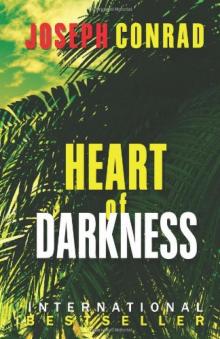 Heart of Darkness
Heart of Darkness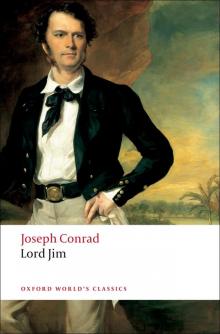 Lord Jim
Lord Jim The Nigger of the Narcissus (Echo Library)
The Nigger of the Narcissus (Echo Library) Victory (Dover Thrift Editions)
Victory (Dover Thrift Editions) Secret Agent
Secret Agent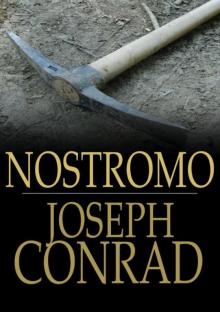 Nostromo
Nostromo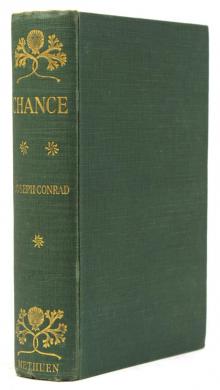 Chance: A Tale in Two Parts
Chance: A Tale in Two Parts Youth
Youth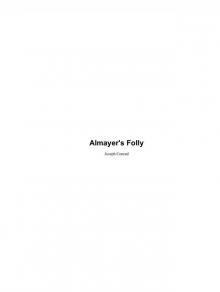 Almayer's Folly
Almayer's Folly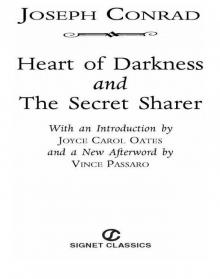 The Heart of Darkness and the Secret Sharer
The Heart of Darkness and the Secret Sharer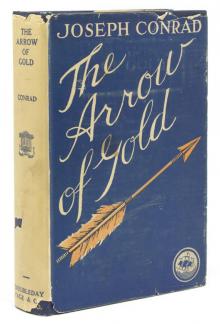 The Arrow of Gold: A Story Between Two Notes
The Arrow of Gold: A Story Between Two Notes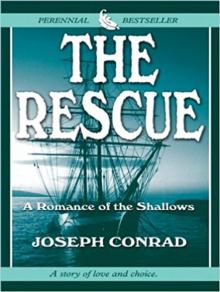 The Rescue: A Romance of the Shallows
The Rescue: A Romance of the Shallows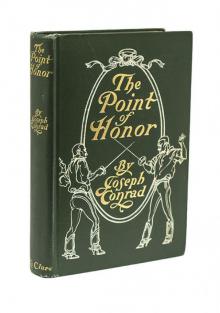 The Point Of Honor: A Military Tale
The Point Of Honor: A Military Tale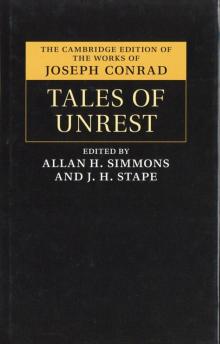 Tales of Unrest
Tales of Unrest Under Western Eyes
Under Western Eyes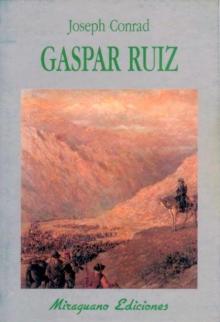 Gaspar Ruiz
Gaspar Ruiz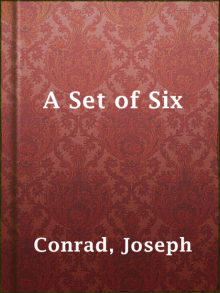 A Set of Six
A Set of Six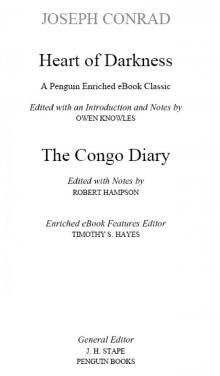 Heart of Darkness and the Congo Diary (Penguin Classics)
Heart of Darkness and the Congo Diary (Penguin Classics)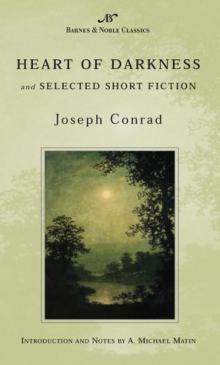 Heart of Darkness and Selected Short Fiction
Heart of Darkness and Selected Short Fiction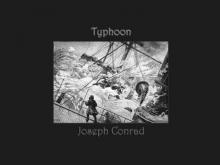 Typhoon
Typhoon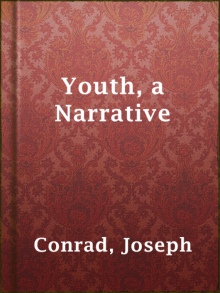 Youth, a Narrative
Youth, a Narrative Tomorrow
Tomorrow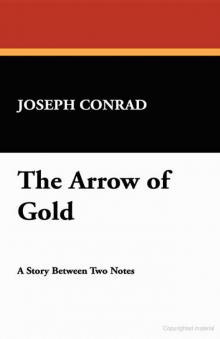 The Arrow of Gold
The Arrow of Gold The Shadow Line: A Confession
The Shadow Line: A Confession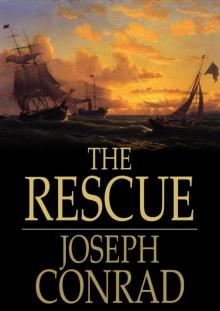 The Rescue
The Rescue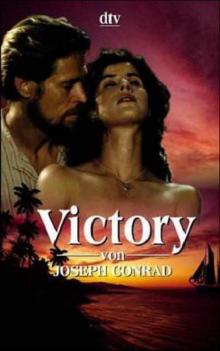 Victory (Echo Library)
Victory (Echo Library) The Brute
The Brute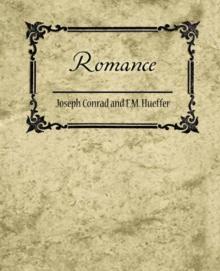 Romance
Romance A Personal Record
A Personal Record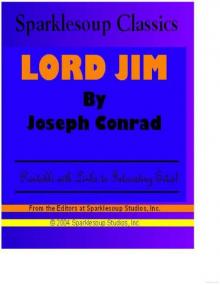 Lord Jim: A Tale
Lord Jim: A Tale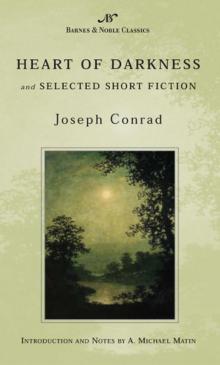 Heart of Darkness and Selected Short Fiction (Barnes & Noble Classics Series)
Heart of Darkness and Selected Short Fiction (Barnes & Noble Classics Series) Within the Tides
Within the Tides The Secret Sharer and Other Stories
The Secret Sharer and Other Stories Falk
Falk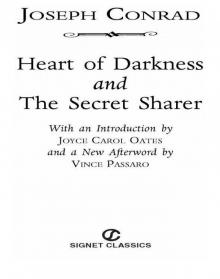 Heart of Darkness and The Secret Sharer
Heart of Darkness and The Secret Sharer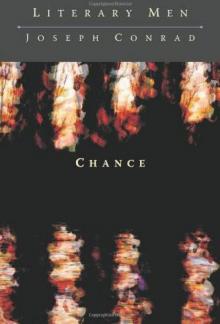 Chance
Chance An Anarchist
An Anarchist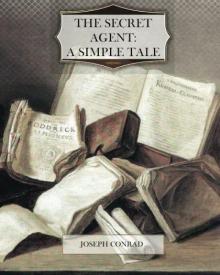 The Secret Agent: A Simple Tale
The Secret Agent: A Simple Tale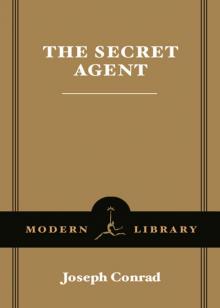 The Secret Agent
The Secret Agent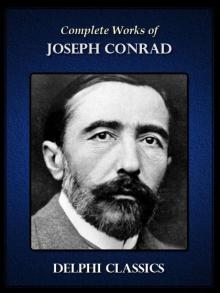 Complete Works of Joseph Conrad (Illustrated)
Complete Works of Joseph Conrad (Illustrated) Heart of Darkness and the Congo Diary
Heart of Darkness and the Congo Diary Notes on Life & Letters
Notes on Life & Letters Typhoon (Single Story)
Typhoon (Single Story)